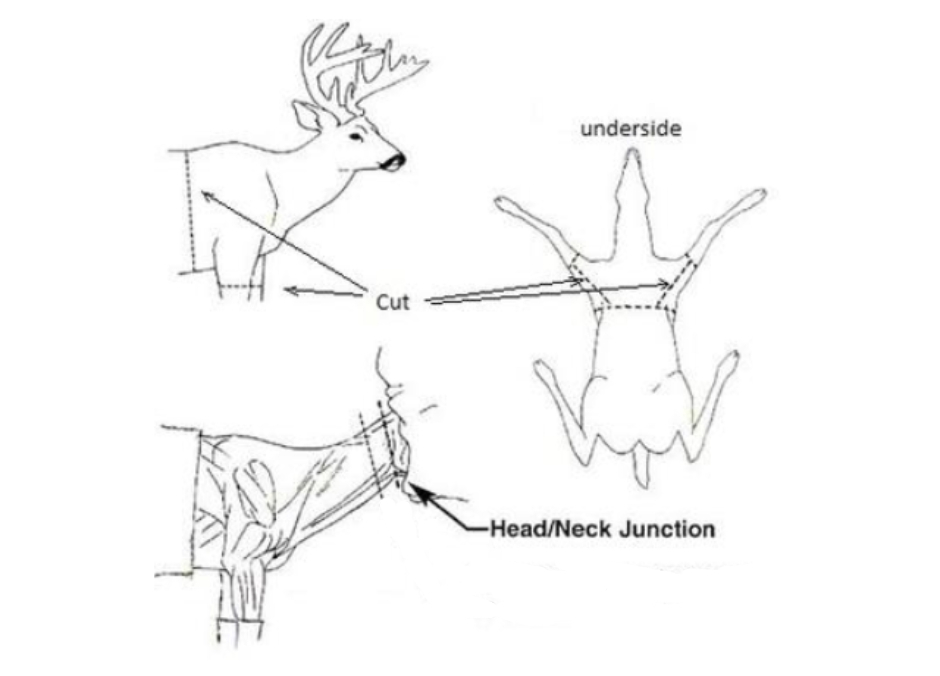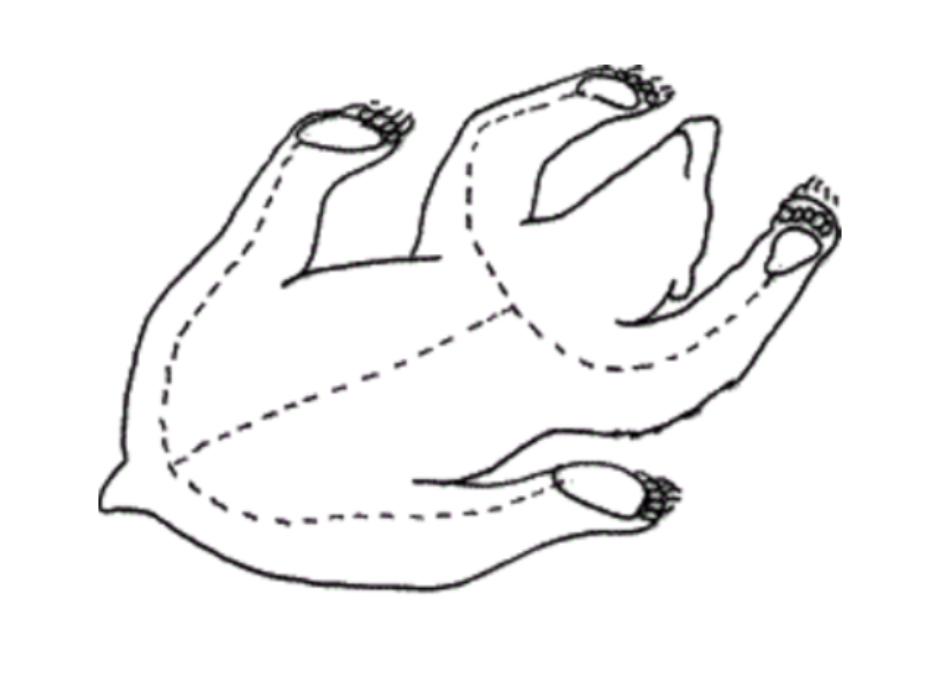*Note: When skinning an animal, always use a sharp knife and make cuts from the underside of the skin whenever possible to avoid cutting the hair.
Caping for a shoulder mount
First, slit the skin around the front legs just above the knees. Cut along the back of the legs up to where they meet the body and then back along the body about 4 inches to 6 inches. This should be approximately the midway point of the rib cage. Next, slit the skin around the body, staying behind the shoulders.
Pull the skin forward up to the ears exposing the head/neck junction. Remove the head by cutting the neck to the spinal column and twisting the head off the neck. Allow the hide to cool, and place it in a plastic bag and freeze it if it cannot be brought to the taxidermist immediately.


Flat Incision
This incision is used for rug mounts and a variety of life-sized mounts. With the animal on its back, make the incisions shown in the picture. Detach the feet at the ankle joints and the head where it meets the neck. Allow the hide to cool, and place it in a plastic bag to freeze it if you cannot bring it to the taxidermist immediately.
Large Mammals for Life-Sized Mounts
When it comes to life-sized mounts of large animals (deer, bear, elk, etc.), the way the animal is going to be positioned in the mount will determine the best incision to make. It is best to call the taxidermist and discuss the mount you have in mind before any incision is made for a life-sized mount.
Small Mammals
DO NOT GUT THE ANIMAL. Animals, coyote-sized and smaller, should be brought to the taxidermist whole. Small mammals, especially carnivores, will spoil very quickly. If the animal cannot be brought to the taxidermist immediately, allow the carcass to cool completely, and place it in a plastic bag and freeze it.
Fish
DO NOT GUT THE FISH. A fish will start to lose its coloration shortly after being caught. Lots of good reference photos immediately after being caught will allow the taxidermist to recreate the natural colors of your fish.
If the fish cannot be brought to the taxidermist immediately, rinse it in cold water and wrap it in a wet cloth or towel with no print. Make sure the fins lay flat against the fish’s body. Place it in a plastic bag and freeze it.
Birds
DO NOT GUT THE BIRD. If there is any blood on the feathers, wipe off what you can with a damp cloth. If the bird cannot be brought to the taxidermist immediately, place it in a plastic bag and freeze it. Take care not to damage the feathers, including the tail feathers. If the tail does not fit in the bag, simply let it stick out and just tie the end of the bag loosely closed.
